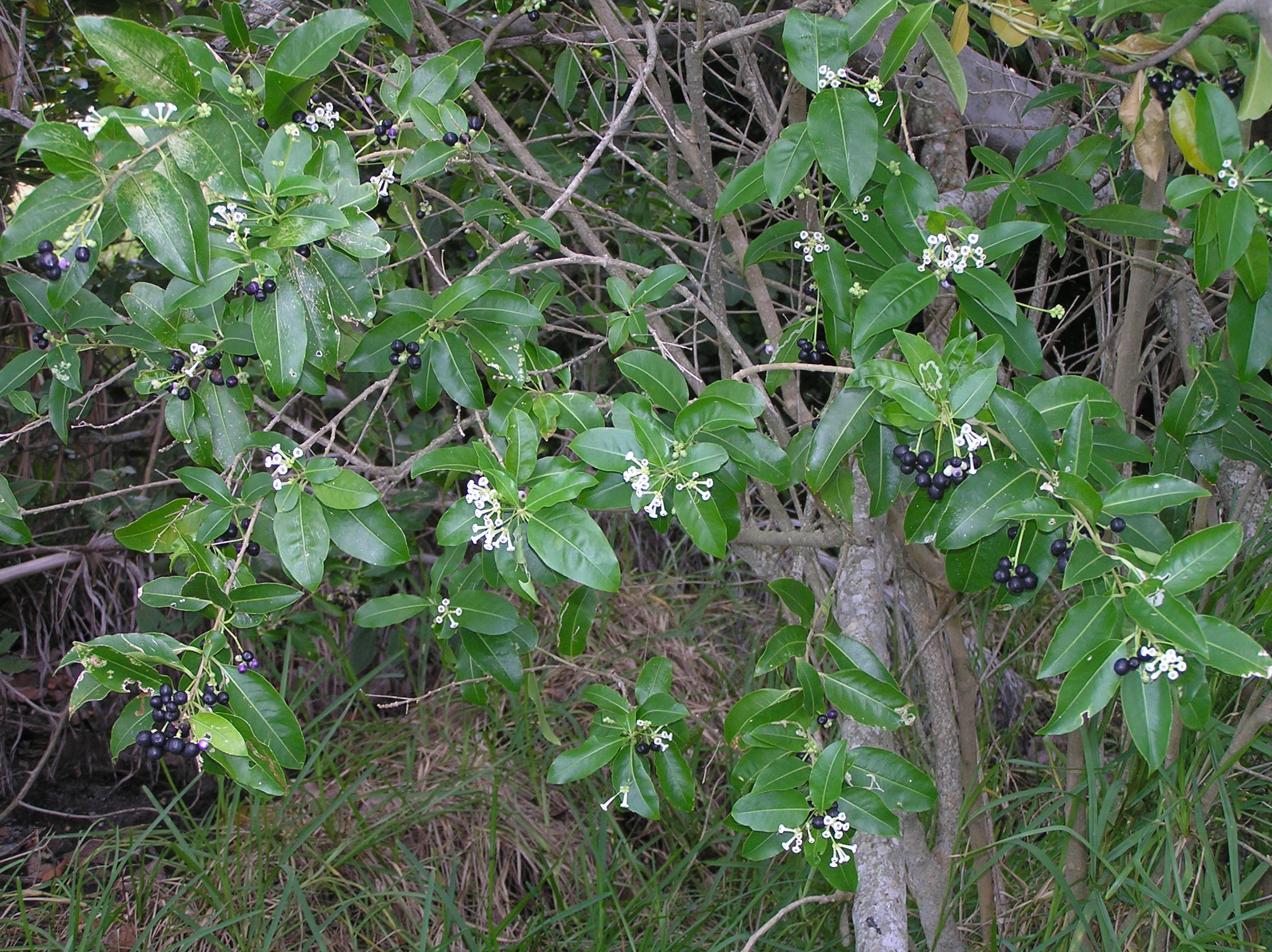Common Name: dayflowering jessamine
Family: Solanaceae
Common Synonyms: none
USDA Hardiness Zone: 8a - 11
Growth Habit: Shrub
Origin: Tropical America
FISC Category: 2
FDACS Listed Noxious Weed: No
Introduction Date: pre-1930's
IFAS Assessment:

Evergreen branched shrub or small tree to 2 m tall. Alternate, simple, leaves, short-stalked, 5-11 cm long, dark, shiny green. White fragrant flowers, trumpet-shaped, and small in stalked clusters at leaf axils. Flowers year-round. Fruit an oval black to violet berry when ripe.
Coastal uplands, flatwoods, marl prairie, disturbed sites
Vouchered north to Hillsborough Co., established in south. Seeds dispersed by birds.

NA
Dave's Garden. 2013. PlantFiles: Day Jessamine, Cestrum diurnum. http://davesgarden.com/guides/pf/go/2742/. Accessed on December 3, 2013.
IFAS, Center for Aquatic and Invasive Plants. 2013. Day jessamine. http://plants.ifas.ufl.edu/node/97. Accessed on December 2, 2013.
Langeland, K.A., J.A. Ferrell, B. Sellers, G.E. MacDonald, and R.K. Stocker. 2011. Integrated management of non-native plants in natural areas of Florida. EDIS publication SP 242. University of Florida, Gainesville, Florida.
Langeland, K.A., H.M. Cherry, C.M. McCormick, K.C. Burks. 2008. Identification and Biology of Non-Native Plants in Florida's Natural Areas-Second Edition. IFAS Publication SP 257. University of Florida, Gainesville, Florida.